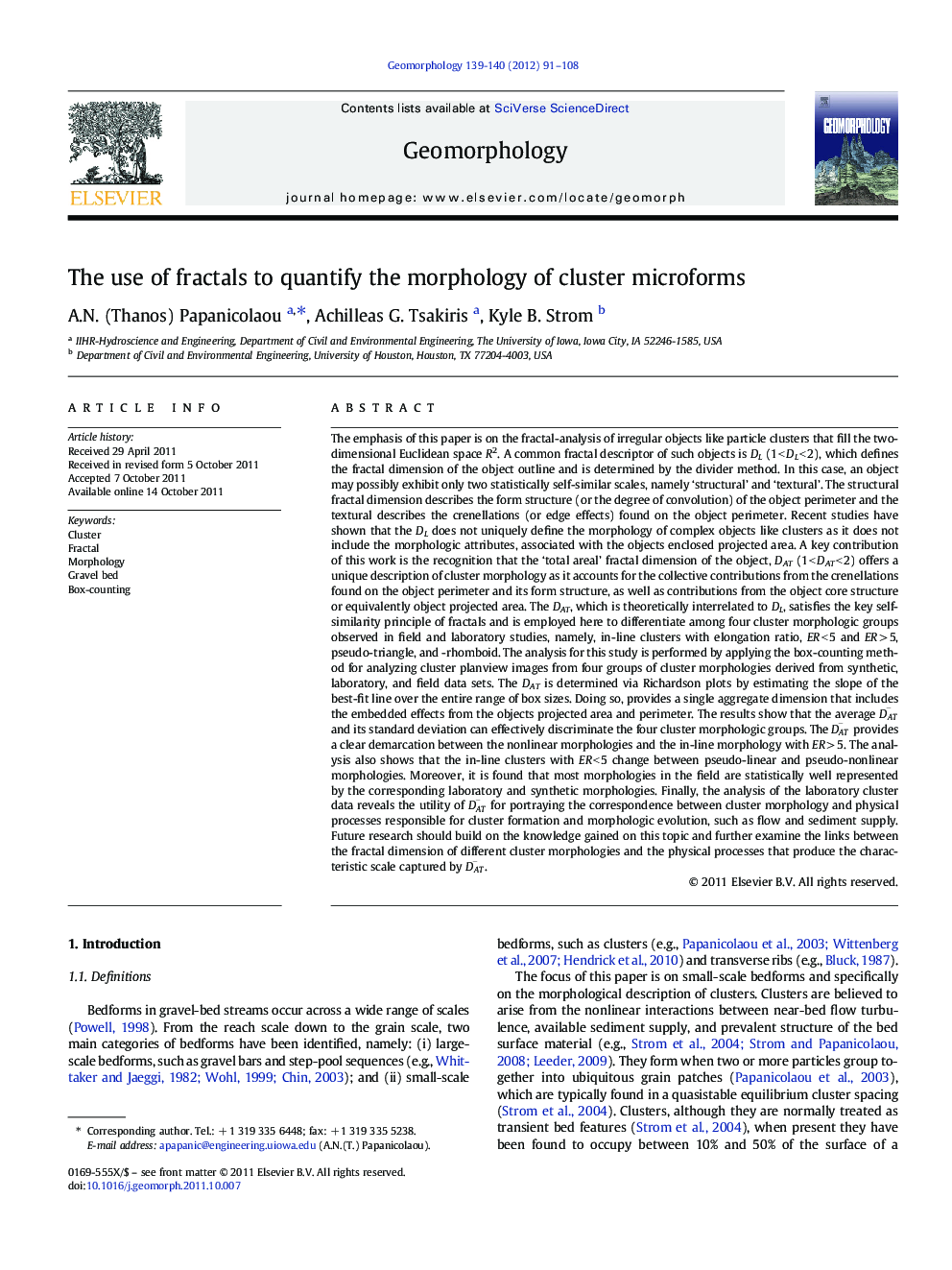| کد مقاله | کد نشریه | سال انتشار | مقاله انگلیسی | نسخه تمام متن |
|---|---|---|---|---|
| 4685298 | 1635489 | 2012 | 18 صفحه PDF | دانلود رایگان |

The emphasis of this paper is on the fractal-analysis of irregular objects like particle clusters that fill the two-dimensional Euclidean space R2. A common fractal descriptor of such objects is DL (1 < DL < 2), which defines the fractal dimension of the object outline and is determined by the divider method. In this case, an object may possibly exhibit only two statistically self-similar scales, namely ‘structural’ and ‘textural’. The structural fractal dimension describes the form structure (or the degree of convolution) of the object perimeter and the textural describes the crenellations (or edge effects) found on the object perimeter. Recent studies have shown that the DL does not uniquely define the morphology of complex objects like clusters as it does not include the morphologic attributes, associated with the objects enclosed projected area. A key contribution of this work is the recognition that the ‘total areal’ fractal dimension of the object, DAT (1 < DAT < 2) offers a unique description of cluster morphology as it accounts for the collective contributions from the crenellations found on the object perimeter and its form structure, as well as contributions from the object core structure or equivalently object projected area. The DAT, which is theoretically interrelated to DL, satisfies the key self-similarity principle of fractals and is employed here to differentiate among four cluster morphologic groups observed in field and laboratory studies, namely, in-line clusters with elongation ratio, ER < 5 and ER > 5, pseudo-triangle, and -rhomboid. The analysis for this study is performed by applying the box-counting method for analyzing cluster planview images from four groups of cluster morphologies derived from synthetic, laboratory, and field data sets. The DAT is determined via Richardson plots by estimating the slope of the best-fit line over the entire range of box sizes. Doing so, provides a single aggregate dimension that includes the embedded effects from the objects projected area and perimeter. The results show that the average DAT¯ and its standard deviation can effectively discriminate the four cluster morphologic groups. The DAT¯ provides a clear demarcation between the nonlinear morphologies and the in-line morphology with ER > 5. The analysis also shows that the in-line clusters with ER < 5 change between pseudo-linear and pseudo-nonlinear morphologies. Moreover, it is found that most morphologies in the field are statistically well represented by the corresponding laboratory and synthetic morphologies. Finally, the analysis of the laboratory cluster data reveals the utility of DAT¯ for portraying the correspondence between cluster morphology and physical processes responsible for cluster formation and morphologic evolution, such as flow and sediment supply. Future research should build on the knowledge gained on this topic and further examine the links between the fractal dimension of different cluster morphologies and the physical processes that produce the characteristic scale captured by DAT¯.
► The emphasis of this paper is on the fractal analysis of particle clusters.
► The ‘total areal’ fractal dimension, DAT, uniquely describes cluster morphology.
► DAT clearly discriminates the nonlinear and in-line cluster morphologies.
► DAT is a powerful cluster morphology descriptor in lab and field scales.
Journal: Geomorphology - Volumes 139–140, 15 February 2012, Pages 91–108